 |
 |
 |
| |
Antiretroviral Intensification Does Not Reduce HIV-1 Viremia in Patients Suppressed on Standard Combination Therapy
|
| |
| |
Reported by Jules Levin
XVII HIV Drug Resistance Workshop
June 10-14, 2008
Sitges, Spain
Frank Maldarelli
HIV Drug Resistance Program
NCI-Frederick, NIH, USA
AUTHOR CONCLUSIONS
-- Third phase declines in HIV-1 viremia following
therapy are followed by stable level of viremia
-- Antiretroviral drug intensification DOES NOT
reduce HIV-1 viral RNA levels
-- These data are inconsistent with active cycles of HIV
replication in sanctuary sites providing a substantial
contribution to plasma viremia on suppressive therapy
-- Therefore, long-lived, chronically infected cells are
the most likely the source of persistent viremia
-- Intra-patient variation in viremia in suppressed
patients may be the product of biological variation
- New strategies are essential for eradicating
HIV-1 infection
Usiing current ART therapy suppresses plasma HIV-1 RNA to <50 copies/ml in most patients, but persistent, low-level viremia can be detected with more sensitive assays. This residual viremia may be produced by long-lived, chronically- or latently- infected cells, or by ongoing, complete cycles of virus replication. To differentiate between these sources, we conducted a trial of antiretroviral drug intensification in patients with HIV-1 RNA levels suppressed <50 copies/ml plasma.
Patients on combination antiretroviral therapy with NNRTI- or PI- based regimens including 2 NRTIs and with stable HIV-1 RNA <50 copies/ml plasma for >1 year were screened for residual viremia using a sensitive HIV-1 RNA assay (single copy assay [SCA]). Six patients with persistent viremia (>1 copy HIV RNA/ml) were enrolled in a 30-day drug intensification study. Participants on PI-based regimens were intensified with efavirenz (N=4), and those on NNRTI-based regimens were intensified with lopinavir/ritonavir (N=2). Plasma for HIV-1 quantification was obtained weekly before, during and after the 30-day intensification period.
Enrolled patients (5 male, 1 female) had HIV-1 infection for a mean of 9 years (range 4-16) and had received combination antiretroviral therapy for a mean of 4 years (range 1-10 years). The level of residual viremia before intensification (mean = 4.5 copies/ml plasma) was similar to that found in prior studies of patients on standard combination therapy. Drug intensification was well tolerated with no serious adverse events reported. Mean plasma HIV-1 RNA levels during intensification (5.3 copies/ml) and following intensification (5.2 copies/ml) were not significantly different from pre-intensification levels (P =0.76 and 0.79, respectively). Similarly, no significant decreases in HIV-1 RNA levels were observed during or after drug intensification in individual patient analyses. No significant changes in blood CD4 +T-cell counts were detected.
This result is not consistent with the notion that persistent viremia results from ongoing, complete cycles of viral replication. New therapeutic approaches will be required to eliminate HIV-1 reservoirs, if possible.
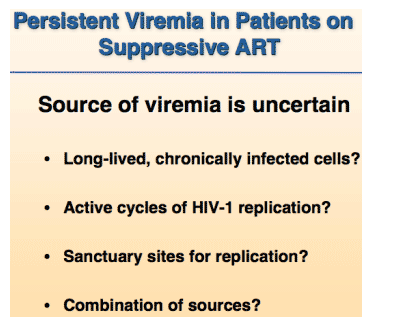
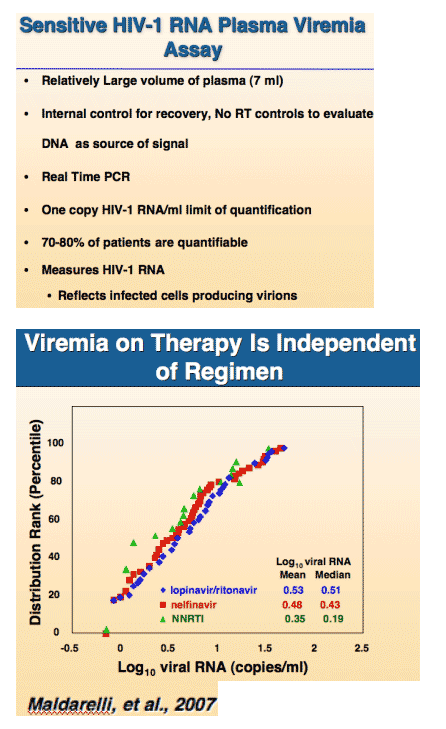
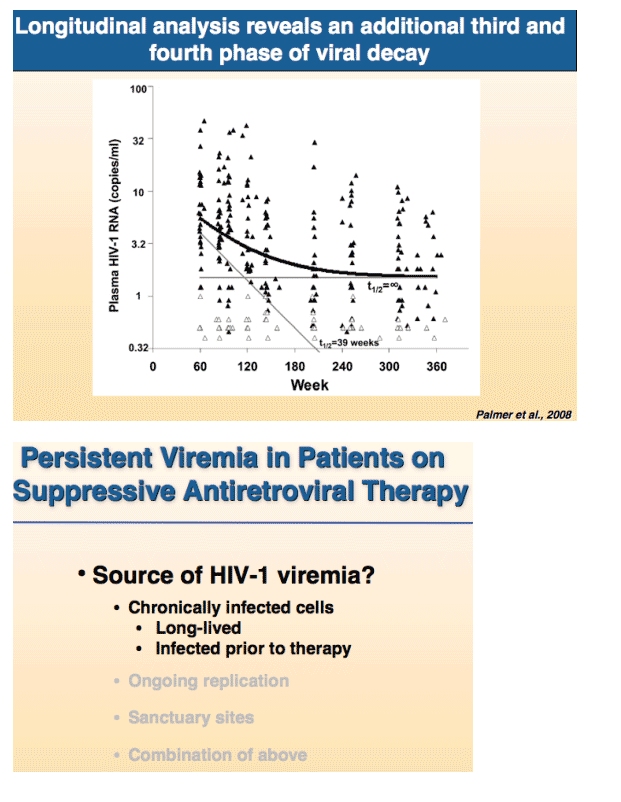
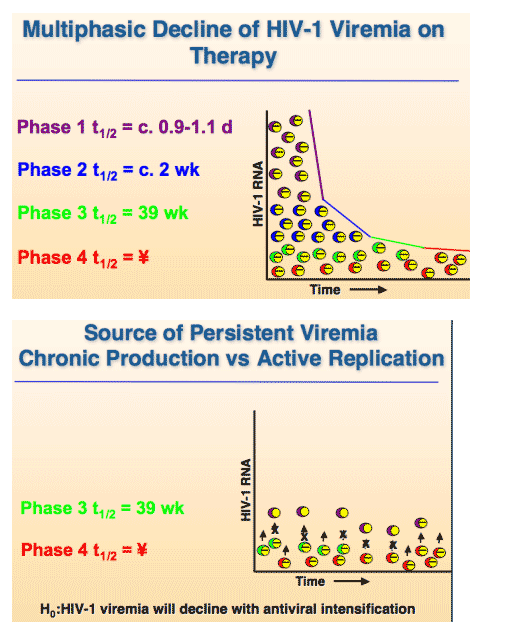
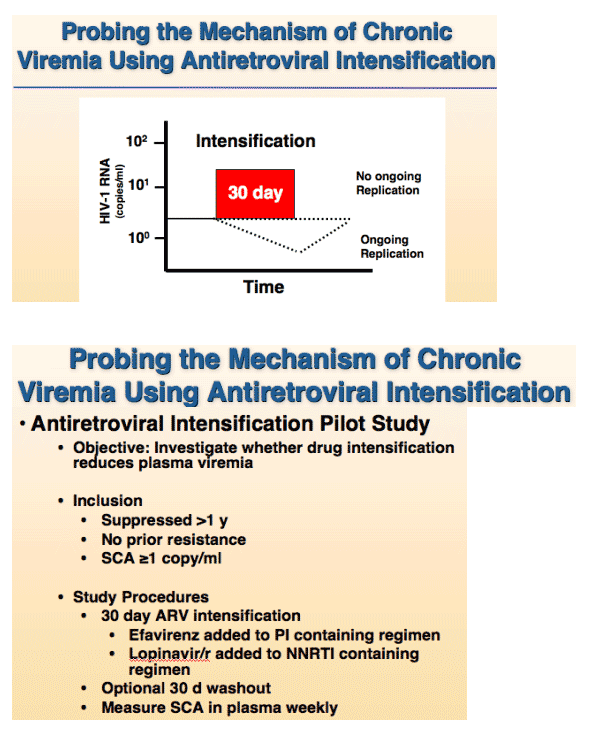


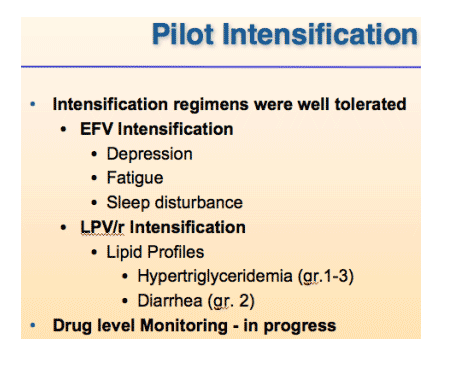
|
| |
|
 |
 |
|
|